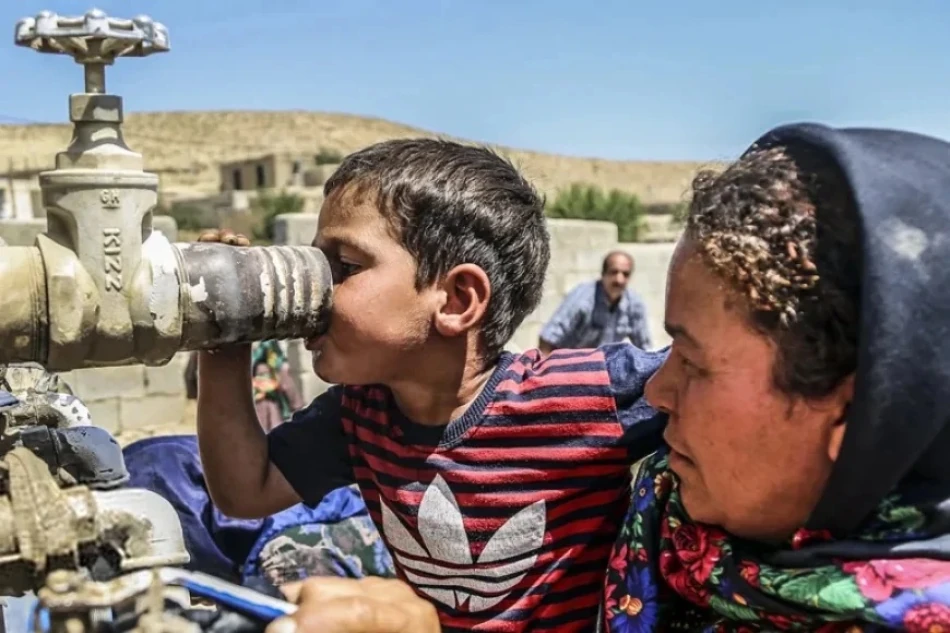
Iran Considers Shutting Down Schools and Universities in Tehran Amid Worsening Water Crisis
Iran Considers Shutting Down Tehran for a Week as Water Crisis Reaches Breaking Point
Iran's government is contemplating an unprecedented week-long closure of government offices, universities, and schools in Tehran as the capital faces what officials describe as a catastrophic water shortage. With 15 million residents potentially at risk, the crisis has reached such severity that President Masoud Pezeshkian warned the entire population may need to evacuate the city, marking one of the most dire environmental emergencies in the Islamic Republic's modern history.
Emergency Measures Under Consideration
Government spokesperson Fatemeh Mohajerani announced Monday that Tehran's water situation has deteriorated to "extremely poor" levels, prompting authorities to explore drastic intervention measures. The proposed shutdown would affect all public institutions and educational facilities for seven consecutive days, representing an extraordinary step for a capital city of Tehran's magnitude.
Beyond the temporary closure, Iran's parliament is pushing for a permanent reduction in the work week from five days to four, running Saturday through Tuesday. The government also plans to reactivate remote work policies similar to those implemented during the COVID-19 pandemic, aimed at reducing both electricity and water consumption across the metropolitan area.
From Pandemic Protocols to Climate Adaptation
The decision to revive remote work infrastructure highlights how governments worldwide are repurposing pandemic-era policies to address climate challenges. Unlike the temporary nature of COVID-19 restrictions, Iran's water crisis represents a long-term structural problem requiring sustained behavioral changes from both institutions and citizens.
A National Crisis Beyond Tehran
The water shortage extends far beyond the capital, affecting more than 20 of Iran's 31 provinces. According to state media reports, one of the country's largest water reservoirs could completely dry up within the next four weeks, signaling the acute nature of this nationwide emergency.
President Pezeshkian's stark warning that Tehran "no longer has any water" and that relocating the capital has become a viable emergency option underscores the gravity of the situation. Such a statement from a head of state regarding a capital city is virtually unprecedented in modern governance, reflecting both the severity of the crisis and the limited options available to policymakers.
Regional Context and Global Implications
Iran's water crisis mirrors broader challenges facing the Middle East, where countries like Jordan, Lebanon, and parts of Turkey have experienced severe water shortages. However, Tehran's situation is particularly acute due to its massive population concentration and limited alternative water sources.
The crisis stems from a combination of factors including prolonged drought, inefficient water management systems, climate change, and decades of economic sanctions that have limited Iran's ability to invest in modern water infrastructure and desalination technology.
Economic and Social Ramifications
A week-long shutdown of Tehran would have significant economic consequences, potentially disrupting government services, educational systems, and business operations. For a country already grappling with international sanctions and economic challenges, the additional burden of climate-induced shutdowns could further strain Iran's economy and social stability.
The potential evacuation of 15 million people would represent one of the largest climate-induced population movements in modern history, creating massive logistical, economic, and humanitarian challenges that extend well beyond Iran's borders. Such a scenario would likely require international humanitarian assistance despite Iran's complicated diplomatic relationships with many Western nations.
A Test Case for Climate Governance
Iran's response to this water crisis will serve as a critical test case for how governments manage acute climate emergencies in major urban centers. The success or failure of these emergency measures could influence policy decisions in other water-stressed regions worldwide, particularly in the Middle East and North Africa where similar challenges are emerging.
Most Viewed News

 Sara Khaled
Sara Khaled






